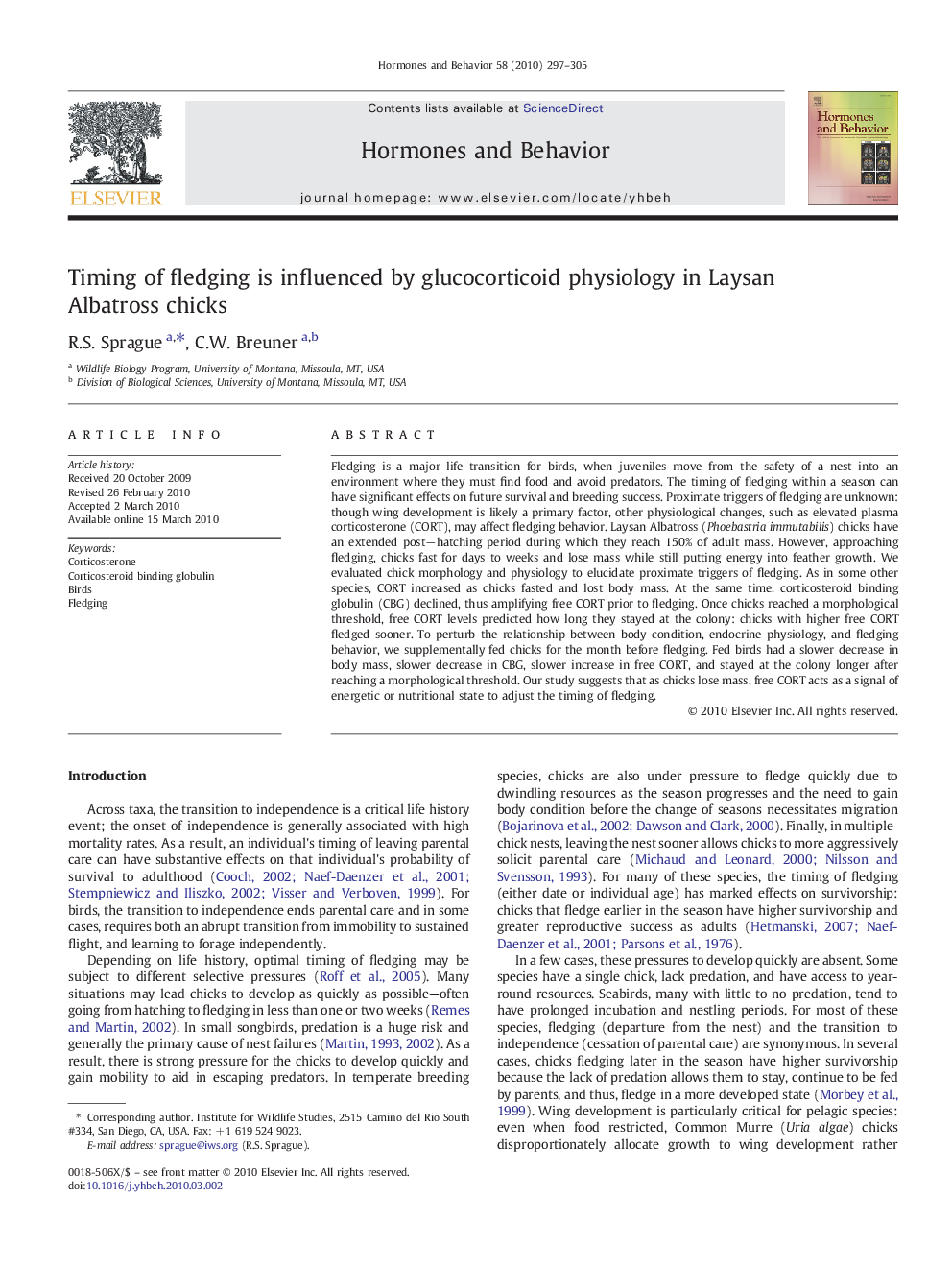| Article ID | Journal | Published Year | Pages | File Type |
|---|---|---|---|---|
| 324095 | Hormones and Behavior | 2010 | 9 Pages |
Fledging is a major life transition for birds, when juveniles move from the safety of a nest into an environment where they must find food and avoid predators. The timing of fledging within a season can have significant effects on future survival and breeding success. Proximate triggers of fledging are unknown: though wing development is likely a primary factor, other physiological changes, such as elevated plasma corticosterone (CORT), may affect fledging behavior. Laysan Albatross (Phoebastria immutabilis) chicks have an extended post−hatching period during which they reach 150% of adult mass. However, approaching fledging, chicks fast for days to weeks and lose mass while still putting energy into feather growth. We evaluated chick morphology and physiology to elucidate proximate triggers of fledging. As in some other species, CORT increased as chicks fasted and lost body mass. At the same time, corticosteroid binding globulin (CBG) declined, thus amplifying free CORT prior to fledging. Once chicks reached a morphological threshold, free CORT levels predicted how long they stayed at the colony: chicks with higher free CORT fledged sooner. To perturb the relationship between body condition, endocrine physiology, and fledging behavior, we supplementally fed chicks for the month before fledging. Fed birds had a slower decrease in body mass, slower decrease in CBG, slower increase in free CORT, and stayed at the colony longer after reaching a morphological threshold. Our study suggests that as chicks lose mass, free CORT acts as a signal of energetic or nutritional state to adjust the timing of fledging.
